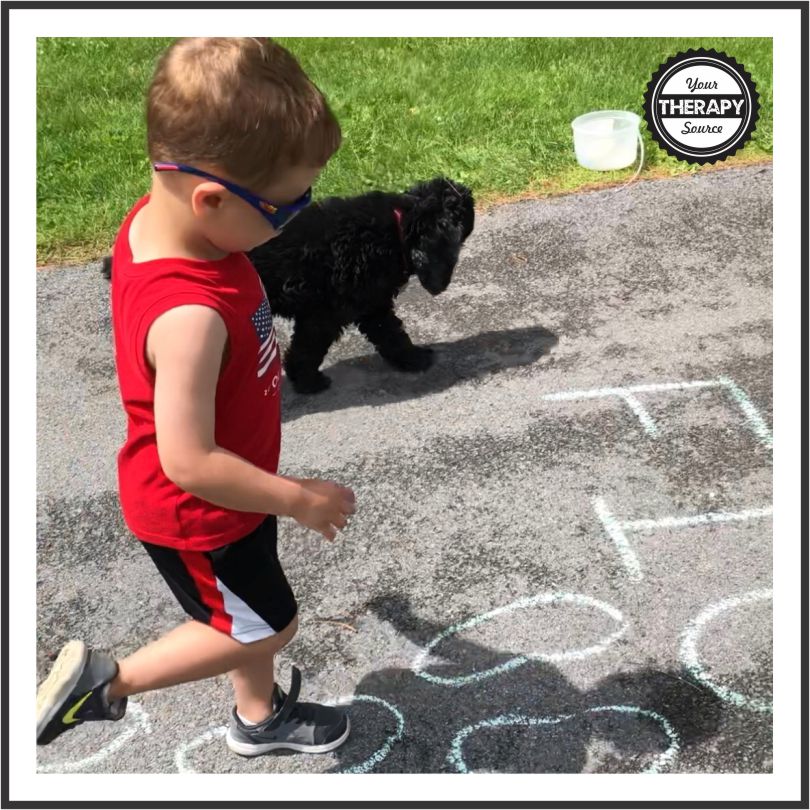Sidewalk Chalk Obstacle Course – Movement and Learning
 Sidewalk Chalk Obstacle Course – Movement and Learning
Sidewalk Chalk Obstacle Course – Movement and Learning
Did you know research has shown that 5-20 minute movement breaks can positively many aspects of learning? This sidewalk chalk obstacle course includes aerobic activity, balance skills, proprioceptive input, outdoor time and academic concepts! It is super easy to set up.
How to Create the Sidewalk Chalk Obstacle Course
Simply draw an obstacle course on the pavement with a few learning stations. You can view a video of this activity in action below.
Section 1 – Jumping Patterns
For this obstacle course, we started with footprints going in various directions so the child has to jump forwards, sideways and backwards. The first learning station has several letters that the child reads out loud. This station encourages gross motor skill development, coordination skills, proprioceptive input, vestibular input and motor planning.
Section 2 – Twisty Path
Walk along the twisty path to get the next group of letters to practice balance and coordination skills. The child reads a different group of letters out loud.
Section 3 – Circle Jumps
Jump from circle to circle to get to the next group of letters. Make sure you double outline the circles or color them in if doing letter recognition so the child doesn’t confuse the circle shapes with the letter ‘O’. This section encourages gross motors, visual-spatial, and coordination skills.
Section 4 – Hopscotch
Trace your feet together and then one foot to create a hopscotch pattern before the next group of letters. The section encourages balance skills, motor planning, and coordination skills.
Section 5 – Running in Place
Draw a stick figure running in place in the last large box before the letters. The child has to run in place while reading the letters. This is difficult for some children to coordination both actions at the same time. This station encourages aerobic activity and motor planning.
Remember, research indicates that movement and learning can help to improve the following:
- cognitive skills including executive function, attention span, memory skills and verbal comprehension
- academic achievement on test scores
- attitude changes in motivation and self-concept
- on task behaviors
- organizational skills
- motor planning
- impulse control
- memory
Why not head outdoors and start moving and learning! Watch a video of the sidewalk chalk obstacle course in action.
References:
Centers for Disease Control and Prevention. The association between school based physical activity, including physical education, and academic performance. Atlanta, GA: U.S. Department of Health and Human Services; 2010.
Crawford, Judy. Young students jog, jump and dance to retain what they learn. Retrieved from the Medical Express on the web on 1/25/2014 at http://medicalxpress.com/news/2014-01-young-students-retain.html#nwlt




